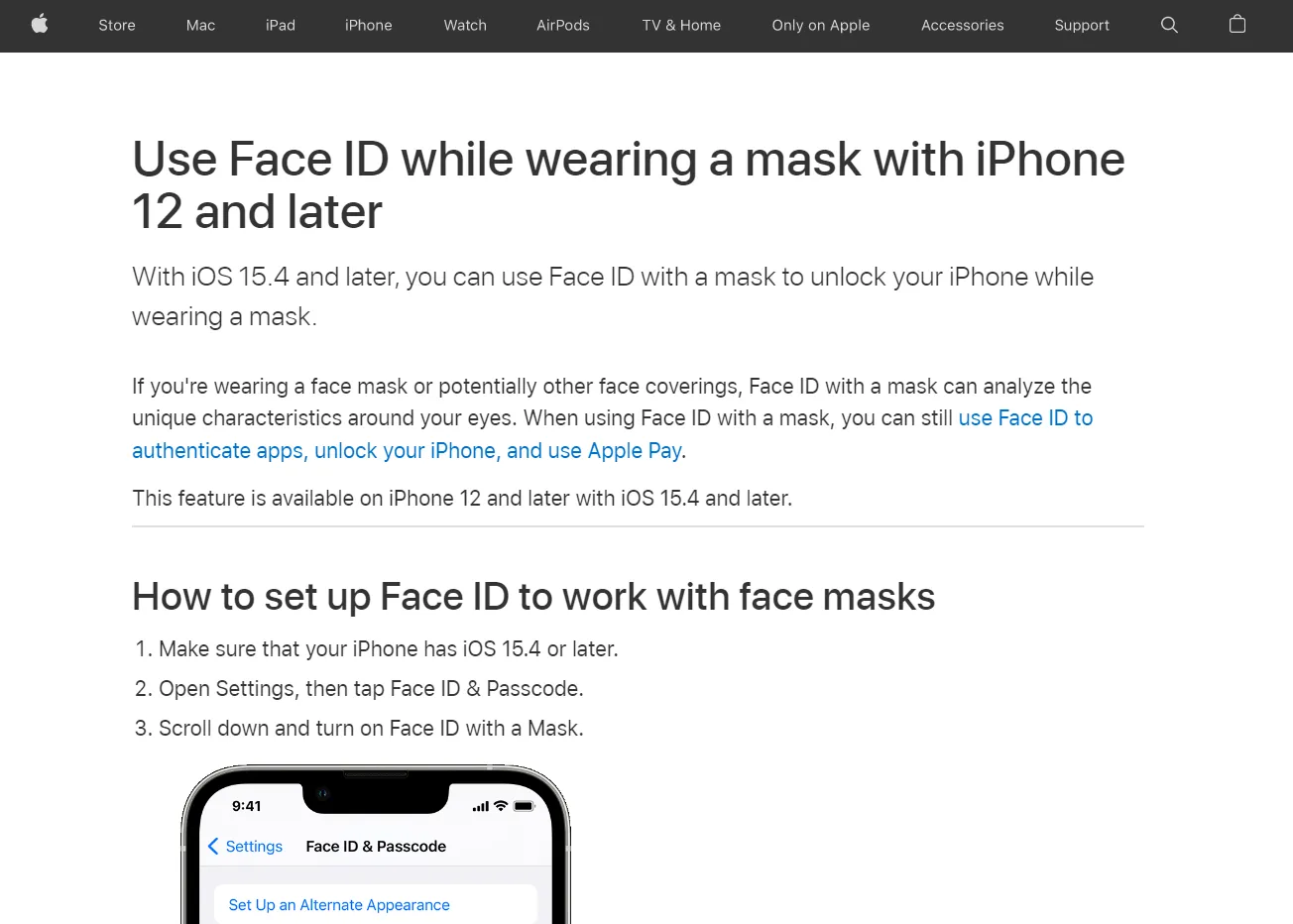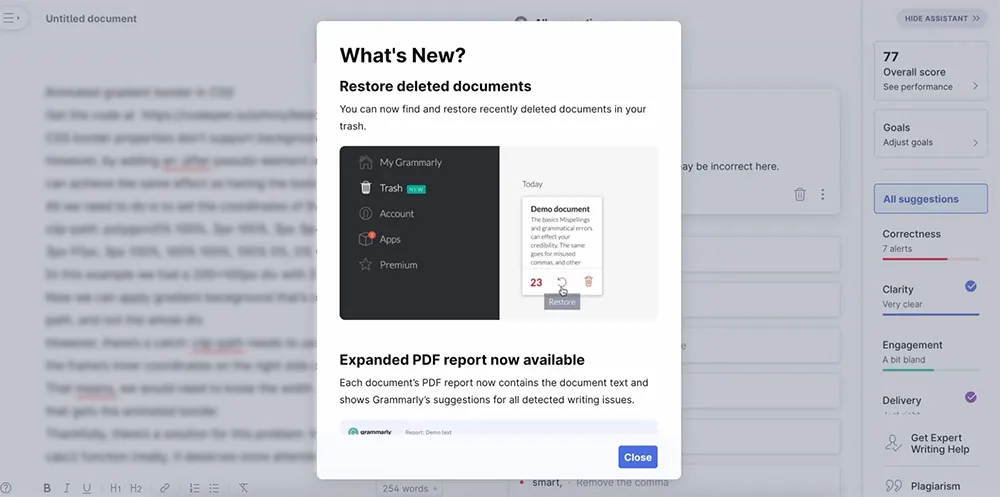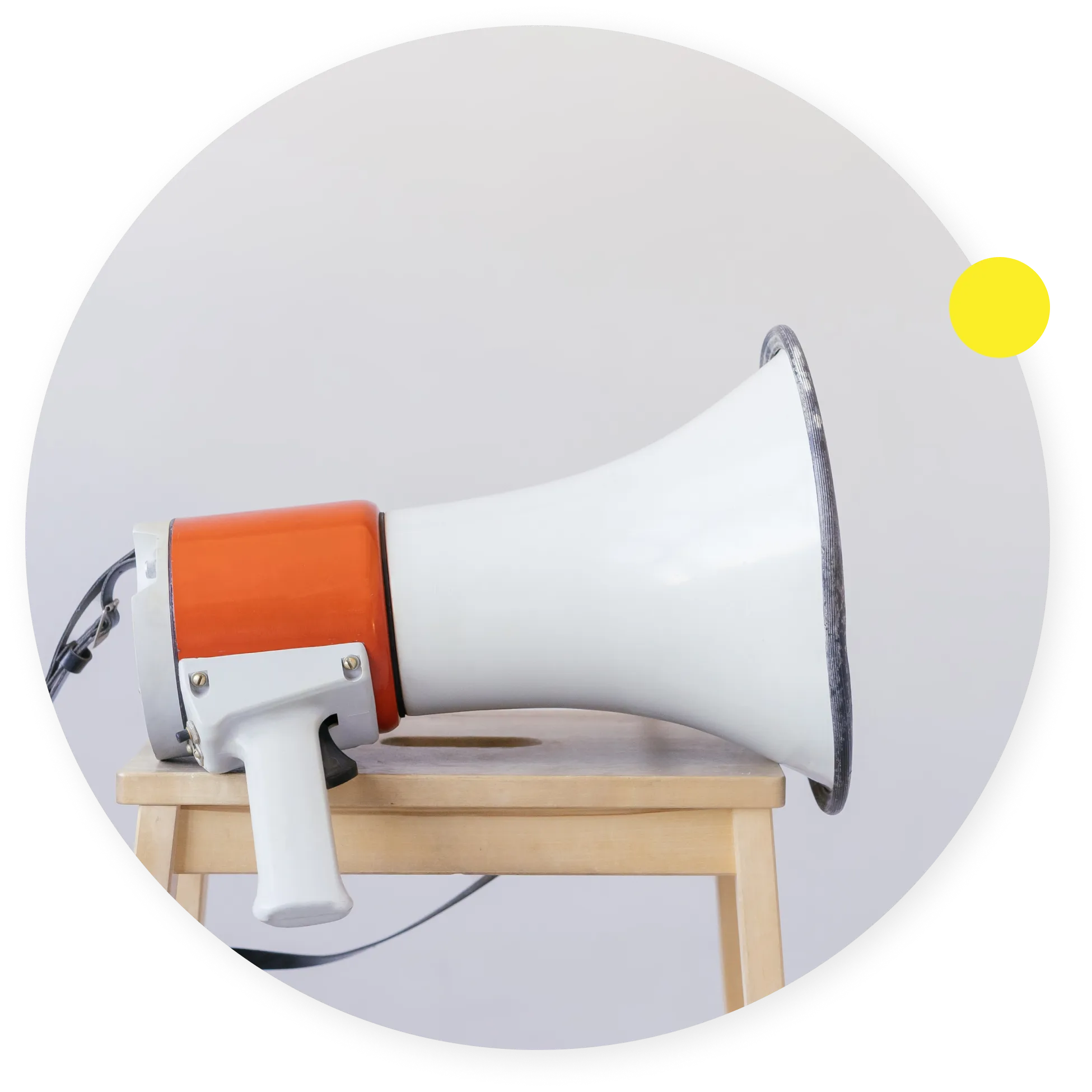Are your users not eager to start using your recently introduced feature?
Chances are, they aren’t even aware of the new functionality, or how it could benefit them.
A well-planned new feature announcement is key to letting them know about your updates and new releases within your product.
But how do you choose the right tools and techniques to make efficient announcements? How can you ensure they reach the right customers at the right moment?
Just follow along with this article to:
- understand the importance of feature announcements
- come up with a bulletproof strategy
- learn about the in and outs of a good announcement message
- answer some questions and implement the five-step framework introduced below
What Is Feature Announcement?
Your team has worked for months on some new functionality, that improves your product.
Something that adds more value to your users or resolves some issues they had in the past.
Everything is deployed on your servers.
So what’s next? Are you going to just sit and wait until your users discover the changes by themselves?
Unfortunately, you would have to wait for a looong time.
A feature announcement is how you notify your users (both new and existing ones) about these new changes in your product.
It can come in many shapes and forms, from in-app messages to articles in your email newsletter.
Delivering the right message in the right channels to the right audience can ensure that your new features don’t get lost.
It can help your users to discover them, and also understand how to use them.
Is Feature Announcement Important?
Short answer: of course!
Let’s start with the most obvious reason: your ROI.
You invested a lot of resources into this new functionality: iterating through ideas, designing it, developing it.
It would be a pity to waste all these efforts.
But a feature that’s not used by anyone, is just that: wasted time and resources.
Feature announcements can help your users quickly find out about functionalities that are most useful to them.
They speed up feature discovery and adoption, and also come with some additional benefits:
- improve loyalty by showing your existing users that you’re listening to their requests and improving your product to their benefit
- keep the users engaged by demonstrating that your product is constantly evolving and you’re non-stop working on making their experience better
- reactivate existing users who haven’t been using your product because of a missing feature (learn more about re-engagement campaigns for inactive users)
- reduce user churn by re-engaging with users who are considering leaving because of the lack of some functionality
- attract new users by showcasing in your marketing channels that your product is evolving and highlighting the extra values these new functionalities would provide to them
- reduce your support requests by educating your users if there’s a new solution for their frequent problem

How to Announce New Features The Right Way?
When your killer feature is ready, ponder for a moment about how you want to announce it to your customers!
You don’t have to overthink it.
But if your team already spent countless hours designing and developing it, you should take the extra effort to create an announcement strategy as well.
If you follow this framework about feature announcement best practices, you can be sure your new feature is not getting lost in the void.
1. Set a Goal
The first step is to define the purpose of the announcement.
You can start by asking the question: “Why did we add this feature?“.
This can help with identifying your goal.
Did your users ask for this functionality? Or did you create it to add more value to your product and attract new customers? Maybe this improvement made your product better, and you could use it to re-engage churned users.
Defining a specific goal has three benefits:
- It brings alignment across the team. Product-led organizations lead with the product across every department1, so all business functions must understand and agree on the common goals.
- It helps you outline the target audience, timing, and distribution channels in the next steps.
- It makes the whole announcement measurable. You can define specific KPIs that can be used to decide if the announcement was successful.
For example, your customers were begging you for a way to export their data. You received a lot of support tickets about this, and so you worked on a feature that makes it possible to export directly from your platform.
The goal could be: “Reduce support requests about data export”.
It’s measurable, everyone can see how it benefits your company, and you can identify which users might find this feature relevant.
In any case, phrase your message with a focus on the benefits to the reader.
Make sure, they understand that the new feature is here to make their life easier.
Unless your customers are aware of the pain your feature solves, they’ll rather avoid using it.
This is counterproductive, as your users would look at new functionalities as an unnecessary layer of complexity.
2. Segment Your Users
Following the previous example, telling about the export functionality might be irrelevant for many of your users.
It would be counterproductive to alert everyone about it.
Instead, define a clear user group that should get notified about the new feature.
There’s no holy grail about how you create these targeting groups, it might vary even between features.
But a good way to get started is by creating user personas2.
Define a few characteristics of a fictional user, who might find this feature useful.
Are they new users or returning ones? Do they belong to a specific user role? What problems does this new functionality solve for them?
You can define numerous personas, as your new feature might be useful for multiple user groups.
3. Prioritize Feature Announcements
Some features are more important than others.
And your users have a limited attention span, and patience to learn about all of them.
You shouldn’t bother them with a new announcement every time they log in to your platform.
That could lead to product-tour fatigue; when your users just skip through your announcements without paying any attention.
So instead of announcing every new feature with drum roll and confetti, maybe take a step back and focus on the really important ones.
Prioritize the ones with the highest impact.
And don’t over-explain. If it’s a feature that is very obvious to use, and easy to find, you don’t need to demonstrate, how it works.
If you’re on fire and developed way too many cool new features, you can still include the less important ones in your newsletter or talk about them in your help center articles.

4. Feature Announcement Channels
Once you defined a clear goal, specific target audience, and which features you want to prioritize, it’s time to choose the distribution channels.
These might be different for each product. You know your audience best, so choose what works best for you.
These channels all work differently and might be used for different use cases:
Blog Post
It can be a great way to explain a new feature, especially if it adds some new value to your product. You can demonstrate the feature with illustrations, video explanations, and example use cases, and tell your audience why is it helpful for them.
You can also optimize the article for SEO keywords to attract potential new customers.
Email Newsletter
Your newsletter reaches potentially all your subscribers (even if they don’t check your webpage or don’t log in to your platform).
Moreover, it can reactivate churned users, if they see that new features are showing up, that they lacked before.
It’s a great channel to explain the key benefits of your new functionalities, but don’t make it too lengthy. The readers want to have a quick overview of your developments, not a long essay.
It’s a good idea to write only a teaser paragraph about your feature in your newsletter, and direct the readers to your blog article if they want to learn more.
Newsletters can also contain a list of smaller new features.
But again, focus on keeping things short and straightforward.
Notion’s update email about new features
Social Media Post
Every business has a different social media presence.
Choose the platforms on which your customers are most active, and deliver the news about your killer new features.
You can sell them as a success, you can congratulate your team for making it, or address how it will benefit new users.
Social media is a great channel to communicate with your audience.
Engage in conversations, and listen to their feedback.
Be approachable and responsive.
Don’t underestimate the importance of your social media presence.
Many of your new users might find you there while reading about these kinds of product announcement posts.

Tutorial Video
You don’t need to stick to text and graphics when explaining your new features.
In a survey conducted by Harris Poll, 59% of the younger generations mentioned YouTube as their most preferred learning tool. Only 47% choose reading3.
Videos are easy to consume and you can provide a real-life context when demonstrating the functionalities in a video.
The easiest way is to create a screen grab where you go through step-by-step the new feature and explain your workflow.
Once edited, you can upload it to your social media channels, to YouTube, or add it to your articles. You can even present it in an in-app popup on your platform.
Live webinars are another marketing tool, where you can demonstrate these new functionalities to new and existing customers, while they can ask and interact in real-time.
Manual User Guide
This might feel old-school to you.
And you might be right.
PDF user manuals are outdated, hard to structure, and hard to edit.
It’s complicated for your users to find the information in them and they can look at older versions that don’t contain all the latest updates.
However, there are situations when you need to stick to them.
If historically that is the number one source for your users to find out about your software, make sure to always update it to the latest version.
A useful tip is to include a version number at the end of the guide, so you can refer your users to the right content while avoiding confusion (that they may be looking at an older version).
However, there are much better alternatives to manual user guides, so try to use different feature announcement channels, if possible.
Help Center Article
A much better alternative is writing a help center article.
It’s dynamic, and always up-to-date.
It can contain links to other relevant documents and descriptions. Or rich media content, even explanation videos.
Search engines can find these articles, which is how many of your users are looking for solutions for their questions.
It can bring you new sign-ups if they accidentally bump into these articles by searching for solutions that their current provider can’t solve, but your platform can.

Slack/Discord Community
Many SaaS companies create online communities to communicate with their customers.
These are great channels to get quick feedback and communicate directly with your most loyal customers.
The tone of the communication is very casual, and it makes your users feel like they have a say in how your product evolves.j
It’s a great platform to showcase your new feature, build hype before releasing it, or even grant early access to the active members in this community.

In-app Popup
Do you want all your active users to learn about your feature?
Then announce it inside your product.
No other channels are as direct as this one.
And it also happens in the best moment: when your user sits down to actually start using your SaaS.
You couldn’t find better timing to show what’s new.
Present it in a summarized way, with some eye-catching graphics, animations, or even video.
Remember, your user came to use your product, so don’t hold them up for too long.
Make the pop-up easy to understand, and clear to the point.
Also, try to limit the number of these announcements to truly groundbreaking features, so your users don’t get distracted every time they log in to your platform.

Guided Product Tour
If a new feature is complex, or it needs additional explanation, you should create a step-by-step tour to guide your users.
“What we learn to do, we learn by doing” - Aristotle’s quote has been proven by numerous studies4.
So if you want a new functionality to stick to your users, guide them through the actual steps.
Make the guide descriptive, so the users can find the logic in the process.
This way, the next time they want to use this feature, they will be able to do it without you holding their hands.
A secondary advantage of creating a guided product tour is linking it to your help desk.
You can present it to your users, who haven’t used this feature for a long time and have forgotten about it.
If they’re stuck and actively looking for a guide, just start this guided tour again, and they’ll be on speed in no time.
Numerous other channels can be used to announce your new features. If they are standalone groundbreaking ones, launch them on Product Hunt; get PR articles in online publications; organize workshops or talk about them in conferences.
Every feature is different so you should evaluate which channels are the most fitting case by case.
This graph can give you a quick overview of their reach and how well they can make a feature stick.
Media
Post
Video
User Guide
Article
Your users will find help center articles the moment they are lost and need to solve an actual problem.
Community
Popup
Tour
5. Measure
Your job is not done with creating the feature announcement.
Measuring its performance can provide you with invaluable insights. Observe your users’ behavior and optimize the announcements, if needed.
Try different copies, tones, and content to see which leads to the best results.
Pay close attention to how many of your users skipped the tour, how many went through all the steps; and how many of them have started using the new feature.
Bonboarding can provide you with all the analytics needed to make decisions and implement changes based on the success of your feature’s adaptation levels, so that your user onboarding process is always optimized.
Not only can you measure the performance of the current announcement, but you can make conclusions that can be used in the future to announce new features even more efficiently.
See what works best, and stick to that.
Get Started
Feature adoption doesn’t just happen.
But with a deliberate plan, your product team can ensure that the intended audience finds out about your new functionalities and starts using them.
Deliver the right message within the right context at the right time to engage with your customers, and make sure your team’s hard work is paid off.
Bonboarding can help with your next feature launch with our variety of announcement tools.
Check out how we can help and get started!

